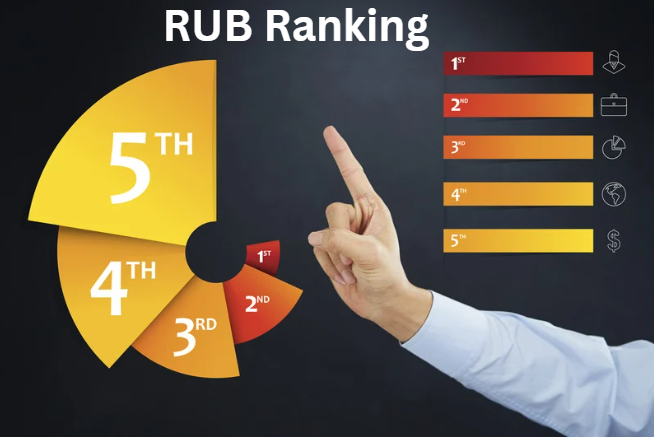In the ever-evolving landscape of higher education, Rub ranking have become a focal point for prospective students, institutions, and stakeholders alike. Among these various metrics lies RUB Ranking—a vital measure that sheds light on the standing of universities worldwide. But what exactly does RUB Ranking entail? Why should it matter to educators and learners? As we dive into understanding this ranking system, we’ll explore its determination process, significance, benefits for universities striving for excellence, and the challenges they face in improving their standings. You might be surprised at how much influence RUB Ranking can wield over a university’s reputation and its ability to attract top talent. Let’s unravel the complexities behind this crucial benchmark in academia!
What is RUB Ranking?
RUB Ranking, or “Ruhr University Bochum Ranking,” is a comprehensive evaluation that assesses universities worldwide based on various performance indicators. This ranking system aims to provide an unbiased perspective of educational institutions by focusing on research output, teaching quality, and international collaboration.
The RUB Ranking considers diverse metrics such as faculty publications, citation impact, and student-to-faculty ratios. It also evaluates the extent of industry partnerships and community engagement efforts.
By offering this multifaceted view, RUB Ranking helps prospective students make informed choices about where to study. Universities are eager to understand their position in these rankings because it reflects their reputation in academia.
This influential measure contributes significantly to global discussions around higher education quality and excellence. As universities strive to improve their standing, RUB Ranking serves as both a benchmark and motivator for academic institutions across the globe.
How is RUB Ranking determined?
RUB Ranking is determined through a meticulous assessment of various criteria. Key factors include academic reputation, faculty quality, research output, and international collaboration.
Surveys involving thousands of academics provide insights into perceived quality in education. This subjective measure can significantly influence a university’s position.
Quantitative metrics also play a role. These include publication counts, citation impact, and funding levels. A robust research environment often correlates with higher rankings.
Another important element is the ratio of international students to domestic ones. Universities that attract diverse student populations typically perform better on the RUB scale.
Institutional governance and resources are evaluated as well. Strong leadership and adequate facilities contribute to overall performance in these rankings.
The significance of RUB Ranking for universities
RUB Ranking holds significant weight in the academic world. It serves as a benchmark for universities globally, influencing perceptions and decisions.
A high RUB ranking enhances a university’s credibility. Prospective students often use these rankings to gauge institutions’ quality when selecting where to study.
Additionally, universities strive for better rankings to attract top-notch faculty. Talented professors are drawn to institutions recognized for excellence, further elevating the institution’s reputation.
Moreover, funding opportunities frequently hinge on RUB Rankings. Universities with higher placements may find it easier to secure grants and partnerships that propel their research initiatives forward.
The ranking also impacts international collaboration. Institutions ranked highly can forge meaningful connections with peers worldwide, fostering exchange programs and joint research projects that enrich educational experiences for all involved.
Benefits of a high RUB Ranking
A high RUB ranking opens doors for universities. It enhances visibility on a global scale, attracting students from diverse backgrounds. This influx of talent enriches the campus community, fostering collaboration and innovation.
Moreover, institutions with strong rankings often find it easier to secure funding. Donors and government bodies are more likely to invest in schools that demonstrate academic excellence and research capabilities.
High RUB rankings can also boost faculty recruitment efforts. Top scholars want to work at prestigious institutions where their contributions will be recognized and valued.
Additionally, a better ranking elevates partnerships with industries and other educational organizations. Collaborations become more fruitful as companies seek out universities known for their quality education and impactful research programs.
Alumni pride increases when their alma mater ranks highly, leading to stronger networks that benefit current students through mentorships or job placements.
Challenges universities face in improving their RUB Ranking
Improving RUB ranking poses several challenges for universities. One major hurdle is the lack of funding for research initiatives. Without financial resources, institutions struggle to produce high-quality publications that contribute to their overall score.
Another issue is the complexity of metrics used in ranking systems. Universities often find it difficult to understand what factors weigh heavily in their rankings. This uncertainty complicates strategic planning and implementation.
Moreover, attracting top-tier faculty and researchers can be an uphill battle. Institutions located in less desirable areas may struggle with recruitment efforts, limiting their potential for academic excellence.
Competition among universities keeps increasing as more institutions aim for higher standings. This fierce rivalry makes it essential for universities to differentiate themselves while striving to enhance their RUB rankings effectively.
Case studies of universities with notable changes in their RUB Rankings
The University of Melbourne experienced a remarkable rise in its RUB ranking after implementing innovative teaching methods and enhancing research output. By investing in interdisciplinary studies, they attracted top-tier faculty members and engaged students more effectively.
In contrast, the University of California faced a drop due to budget cuts impacting key programs. This highlighted how financial stability directly influences academic performance and reputation.
On the other hand, the National University of Singapore saw a significant boost by emphasizing international collaborations. Their partnerships with global institutions enriched their curriculum and research opportunities.
Another example is the University of Toronto, which improved its ranking through targeted outreach initiatives aimed at increasing diversity among students and staff. This not only enhanced their academic environment but also elevated their standing globally. Each case illustrates distinct strategies that universities can adopt to navigate the competitive landscape shaped by RUB rankings.
Conclusion: Why RUB Ranking matters and how it can impact the higher education landscape
RUB Ranking plays a pivotal role in shaping the higher education landscape. As universities strive for excellence, this ranking serves as both a compass and a mirror—guiding institutions toward improvement while reflecting their current status on the global stage.
A high RUB Ranking can attract more students, faculty, and funding. It enhances an institution’s reputation, making it a preferred choice for prospective learners and researchers alike. This ripple effect fosters collaboration with industry partners, boosting innovation and development within academic programs.
However, achieving or maintaining a favorable RUB Ranking is not without its challenges. Universities must continually adapt to evolving criteria and expectations from both evaluators and stakeholders. Balancing quality education with research output demands strategic planning and resource allocation.
The impact of RUB Rankings extends beyond individual institutions; they influence regional educational policies and international collaborations while driving competition among universities worldwide. With each shift in ranking data comes new opportunities for growth or areas that require urgent attention.
Understanding the nuances of RUB Rankings helps stakeholders navigate this complex terrain effectively. Institutions committed to elevating their standards will ultimately contribute to advancing knowledge across disciplines—a critical factor in addressing global challenges today.

